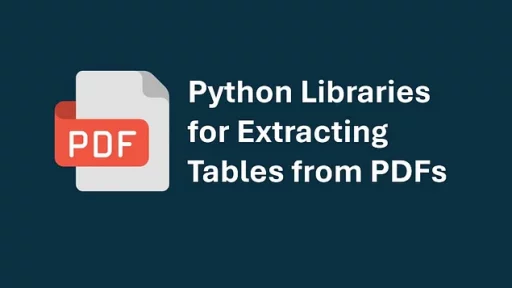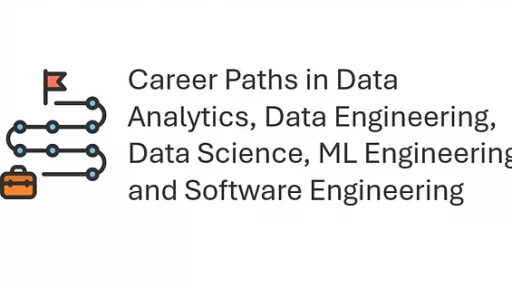Python developers often need tools to create graphical user interfaces (GUIs) for desktop or mobile applications. PyQt has long been a popular choice, but there are several frameworks that stand out as excellent alternatives. Each caters to specific project needs and developer preferences, offering unique features and advantages.
Below, we explore five notable options: Tkinter, Kivy, wxPython, PySide6, and Dear PyGui.
1. Tkinter
Overview
Tkinter is Python’s standard GUI library, included in most Python installations. It provides essential tools to build simple, functional applications. Developers who need quick results without additional setup often choose Tkinter. Its interface is straightforward, making it ideal for beginners.
Features
- Offers basic widgets like buttons, labels, and text fields.
- Enables quick prototyping with minimal boilerplate code.
- Integrates well with Python’s built-in libraries.
Installation
Since Tkinter is bundled with Python, no additional installation is required. Linux Installation — On Linux systems (e.g., Ubuntu or Debian), you can install Tkinter using:
sudo apt-get install python3-tkResources

2. Kivy
Overview
Kivy is an open-source Python framework focused on multitouch applications. It supports a wide range of devices, including desktops and mobile platforms. Kivy’s flexibility makes it a top choice for developers creating apps for Android and iOS.
Features
- Allows multitouch gestures and advanced input methods.
- Includes a unique language for defining layouts (KV Language).
- Offers cross-platform support for Windows, macOS, Linux, Android, and iOS.
Installation
Kivy can be installed with pip:
pip install kivyResources
- Kivy Website
- Documentation: Kivy Docs
Example Applications
Applications built with Kivy include games, multimedia apps, and educational tools.

3. wxPython
Overview
wxPython wraps native GUI components, ensuring that applications resemble those made with the host operating system. This framework excels in creating professional, native-looking applications for desktop platforms.
Features
- Leverages native widgets for a consistent appearance.
- Provides a rich set of controls, including grids and tree views.
- Supports advanced layout options.
Installation
Install wxPython using pip:
pip install wxpythonResources
- Official Website
- Documentation: wxPython Docs
Example Applications
wxPython is often used for scientific tools, data visualization apps, and office utilities.

4. PySide6
Overview
PySide6, also known as Qt for Python, is the official set of Python bindings for the Qt framework. It is similar to PyQt but features a more permissive LGPL license. This allows developers to use it in both open-source and commercial projects without additional costs.
Features
- Comprehensive set of widgets for professional-grade applications.
- Offers support for 2D and 3D graphics, multimedia, and advanced layouts.
- Includes tools for UI design using Qt Designer.
Installation
Install PySide6 with pip:
pip install pyside6Resources
- Official Website
- Documentation: PySide Docs
Example Applications
Developers use PySide6 for enterprise-level software, multimedia players, and design tools.

5. Dear PyGui
Overview
Dear PyGui is a modern, GPU-accelerated Python GUI framework designed for high-performance and interactive applications. Unlike traditional GUI frameworks, it prioritizes real-time performance, making it ideal for applications like game editors and data visualization dashboards.
Features
- GPU acceleration ensures smooth rendering.
- Provides a modern and minimalist look out of the box.
- Designed for creating dynamic, responsive user interfaces.
Installation
Install Dear PyGui with pip:
pip install dearpyguiResources
- GitHub Repository
- Documentation: Dear PyGui Docs
Example Applications
Applications built with Dear PyGui include interactive dashboards, game editors, and simulation tools.

Choosing the Right Framework
Each of these frameworks has its strengths, and the choice depends on your project’s requirements:
- Tkinter: For beginners and small, straightforward projects.
- Kivy: For cross-platform and touch-enabled applications.
- wxPython: For desktop applications requiring native aesthetics.
- PySide6: For feature-rich, scalable applications.
- Dear PyGui: For high-performance, real-time applications.
These frameworks provide extensive documentation, making it easier to get started regardless of experience level. Links to examples and official resources offer a deeper look at their capabilities, helping developers make informed choices for their projects.
Thank you for reading this article. I hope you found it helpful and informative. If you have any questions, or if you would like to suggest new Python code examples or topics for future tutorials, please feel free to reach out. Your feedback and suggestions are always welcome!
Happy coding!
Py-Core.com Python Programming
You can also find this article at Medium.com


